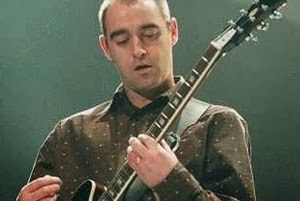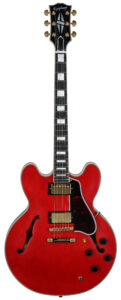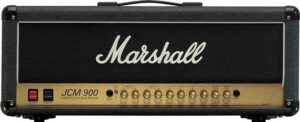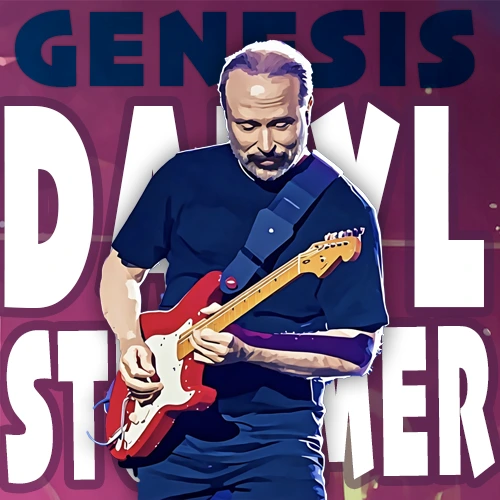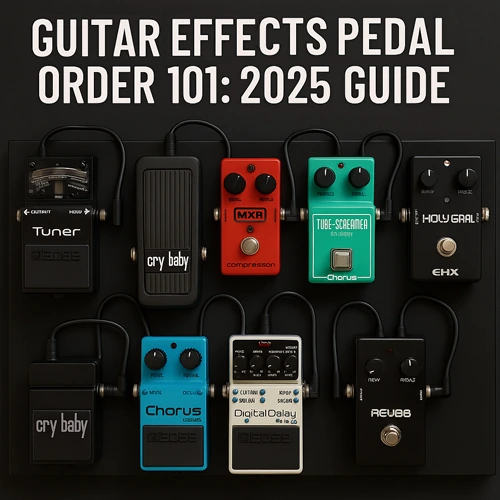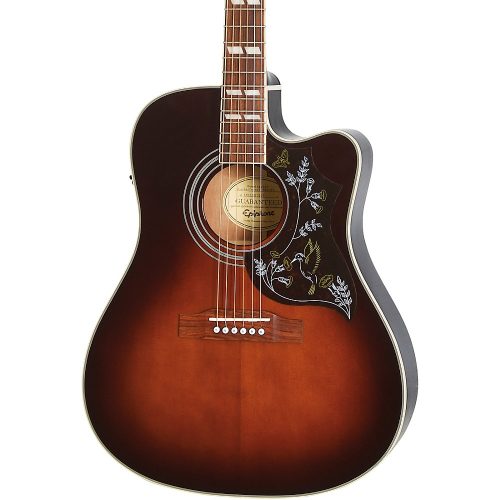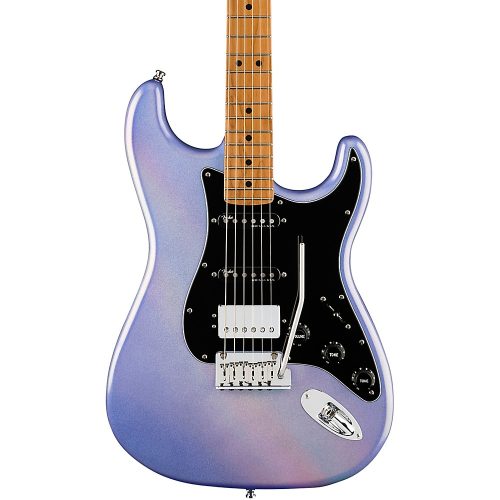
Table of Contents
The impossible just happened. After 16 years of silence, two feuding brothers walked hand-in-hand onto a Cardiff stage while 62,000 people went absolutely mental. When Liam Gallagher cheekily asked the crowd “Is it worth the £40,000 you paid for the ticket?” the deafening roar that came back said everything about what Oasis means to people.
What’s brilliant is that none of this magic would exist without a working-class kid from Burnage who learned guitar during probation and famously described himself as “average at best.” Noel Gallagher never tried to be the next Hendrix or Page. Instead, he cracked the code that most guitarists completely miss: sometimes the simplest idea, delivered with total conviction, can literally move mountains.
Those simple ideas became the anthems of a generation. From that opening jangle on “Live Forever” to the massive singalongs that turned Knebworth into a spiritual experience, Noel proved that great guitar parts serve the song, not the player’s ego. With Oasis now reunited for a 41-date world tour ending in São Paulo this November, and serious whispers about new material in 2026, there’s never been a better moment to decode what made him a legend.
The Burnage Boot Boys: How Oasis Conquered Everything
Born into a working-class Irish family in Manchester, Noel Thomas David Gallagher’s guitar journey started during the worst possible circumstances. After getting arrested for robbing a corner shop at 14, his mum bought him a guitar to keep him out of trouble during probation. But it was watching Johnny Marr play “This Charming Man” on Top of the Pops that properly switched him on:
“From that day on, I wanted to be Johnny Marr.”
After bouncing between construction jobs and a stint as roadie for Inspiral Carpets, Noel came home in 1991 to find his little brother Liam had joined some local band called The Rain. His ultimatum was brutal and brilliant: make me the songwriter and guitarist, or I’m not interested. Liam, desperate to keep his older brother around, agreed.
Within three years, they’d formed Oasis and written and recorded “Definitely Maybe” – the fastest-selling debut album in British history. The secret wasn’t complex arrangements or flashy solos. Noel had figured out how to write songs that felt massive while staying dead simple. He combined Beatles melodies with punk attitude, creating something that sounded both familiar and revolutionary. And sometimes even “stole” a few licks here and there. Why not?
His honesty about his limitations became his strength:
“I’ve got a certain style and I’ve got no control over what I write. I’m not technically proficient enough to attempt all kinds of music… I just write these songs because they’re real to me and they’re coming from a place of truth.”
That truth connected with millions of people who felt exactly the same way, and still do today in 2025! Let’s start with the tunes that founded Britpop!
The Classics: Five Tracks That Changed Everything
“Live Forever” (1994)
Written specifically to counter grunge’s nihilism, this was Noel’s statement of intent. The acoustic intro builds through layered electrics into something that genuinely feels eternal. That main chord progression is deceptively simple – G, D, Am, C – but the way he voices it, with those ringing open strings, makes it sound huge.
Noel said that this song was a direct answer to Nirvana’s “I hate myself and want to die” track which didn’t sit right with him!
“I just remember thinking I’m not having that! You can’t send that message out to kids!”
“Wonderwall” (1995)
The song everyone knows, built around a capo’d acoustic(2nd fret) and one of the most recognizable chord progressions ever written. Originally Noel wanted to sing it himself, but Liam’s insistence created the perfect dynamic. The electric parts are minimal but crucial – those little lead fills between verses add just enough without cluttering the arrangement.
“Don’t Look Back in Anger” (1995)
Noel’s compromise after losing “Wonderwall” to Liam. Starting with that simple piano melody, it builds into something genuinely anthemic. The guitar work is restrained but effective – power chords that breathe, lead lines that serve the vocal melody. It’s songwriting maturity disguised as a singalong.
“Champagne Supernova” (1995)
Seven minutes of psychedelic ambition that proved Oasis could stretch out without losing focus. The layered guitars create a wall of sound that builds and builds. Noel uses different guitar tones and textures to create sections – clean verses, distorted choruses, that feedback-drenched outro that still gives you goosebumps.
“Some Might Say” (1995)
Their first UK number one, capturing peak Oasis swagger. The rhythm guitar drives everything – chunky power chords with strategic use of open strings to add brightness. That little lead riff between sections? Pure Noel – memorable without being showy.
Master His Sound: The Noel Gallagher Way
The Big Chord Philosophy
Noel’s approach starts with one simple rule: every chord should feel like it could power a stadium. He constantly uses open strings to add brightness and sustain, finding chord shapes that incorporate those ringing notes rather than barring everything. A simple G major becomes much more interesting when you’re hitting that open B string. Don’t underestimate the capo either – “Wonderwall” wouldn’t exist without that capo on the second fret, giving those bright, cutting chord shapes that defined early Oasis. While other bands stuck to basic power chords, Noel would add ninths and suspended fourths, anything that made the basic shape more interesting without losing the punch.
The Bonehead Factor
Here’s the secret weapon behind that legendary Oasis wall of sound – the partnership with Paul “Bonehead” Arthurs. While Noel played open chord shapes down at the nut, Bonehead would play the same chords as barre chords higher up the neck. When Noel strummed an open G, Bonehead might barre the same G at the 3rd fret. Same notes, completely different textures combining into something massive. This technique made two guitars sound like an orchestra and created that instant thickness that separated Oasis from every other band. It’s a simple concept that any two guitarists can use – one plays open, one plays barred, and suddenly you’ve got that stadium-filling sound.
The Pentatonic Gift
Here’s where Noel’s real genius shows – he takes the basic pentatonic patterns we all learned first and turns them into pure gold. His solos aren’t groundbreaking technically, but they’re absolutely memorable because crowds can sing them. Listen to the “Don’t Look Back in Anger” solo – it’s basically pentatonic box one, but every note feels inevitable. Most of his “solos” are actually just the vocal melody played on guitar, and that’s not laziness – it’s brilliance. When 50,000 people can sing your guitar parts back at you, you’ve created something bigger than music. While other guitarists were showing off their scales, Noel was crafting guitar lines that stick in your head for decades. That’s his superpower – making everything hummable.
Study The Master: Noel’s Pentatonic Soloing Masterclass
Want to see Noel’s pentatonic genius in action? There’s a brilliant YouTube breakdown that analyzes his “Don’t Look Back in Anger” solo from Knebworth 1996, showing exactly how he transforms simple scales into unforgettable music. The analysis reveals three key elements: his songwriter mindset (thinking like a singer rather than getting lost in theory), his diagonal movement across the neck using connected pentatonic shapes, and his strategic use of repetition to build energy.
What’s fascinating is how Noel handles the tricky F to F minor chord change – while technical players might target specific notes to match the harmony, he simply follows the melody where it wants to go. The breakdown demonstrates his use of repetition isn’t lazy, it’s strategic, creating rhythmic drive that connects with listeners on a primal level. It’s a masterclass in serving the song while still delivering guitar moments that give you goosebumps.
The Gear That Built Britpop
Electric Guitars
Gibson ES-355 (1960) – His True Love
In 1997, Noel bought a cherry red 1960 Gibson ES-355 and promptly fell in love. It became his primary writing and recording guitar, though he initially felt it was “too nice” to take on tour. By the mid-2000s, he couldn’t bear to leave it at home, and it became his main stage weapon. This is the guitar that powered Oasis through their final years and continues to be his constant companion with High Flying Birds. Fun fact: a different ES-355 was famously destroyed by Liam during that legendary Paris argument in 2009 – the one that ended Oasis forever.
The semi-hollow construction gives you sustain like a solid body but with added warmth and resonance. It’s perfect for both chunky rhythm work and those singing lead lines that made Oasis anthems so special.
Budget Alternative(pictured above): Epiphone Inspired By ES-355 Gets you that semi-hollow tone without the vintage price tag. Won’t have the exact mojo of a ’60s Gibson, but it’ll deliver the goods.
Gibson Les Paul Standard (1960) – The Johnny Marr Special
Before he could afford proper Gibsons, Noel’s breakthrough came via his friendship with Johnny Marr. The former Smiths guitarist loaned him a beautiful 1960 Les Paul Standard (previously owned by Pete Townshend) that was used on “Slide Away” and “Live Forever.” Noel managed to break the neck, so Marr loaned him another – a black Les Paul Custom. Generously, Marr never asked for either guitar back, and Noel still owns the original today.
Budget Alternative: Epiphone Les Paul Standard Basically the same guitar Noel started with on “Definitely Maybe.” Sometimes the humble option is the right option.
Epiphone Riviera – The Morning Glory Machine
During the writing of “(What’s The Story) Morning Glory?”, both Noel and Bonehead bought Epiphone Rivieras with full-sized humbuckers. Noel’s love of The Beatles influenced this choice, and these guitars became the foundation for that album’s sound. The Riviera led to Noel’s most iconic instrument – his Union Jack painted Sheraton, complete with Frequensator tailpiece and mini-humbuckers.
Acoustic Guitar
Gibson J-150 – The Wonderwall Hero
For the last two decades, Noel’s favorite acoustic has been a Gibson J-150, easily identified by a bootleg Adidas sticker above the fingerboard. The only difference between a J-150 and the more expensive J-200 is binding on the neck and headstock – sonically, they’re nearly identical. This humble jumbo has powered acoustic classics like “Wonderwall” and “Half The World Away.”
Modern Alternative: Gibson J-45 Since the J-150 is no longer in production, the J-45 is Gibson’s current jumbo offering that delivers similar tone and projection.
Budget Alternative: Yamaha FG830 A solid spruce top dreadnought that punches well above its weight class and delivers that big, strumming tone perfect for Oasis singalongs.
Amplification
Noel’s amp journey evolved from Marshall JCM900 stacks in the early days to more refined choices later. He discovered that smaller amps often worked better in the studio, favoring Fender Princetons, Bandmasters, and Vox AC30s for their distinctive character.
Budget Options:
- Marshall DSL40C: Modern Marshall tone with vintage character
- Vox AC15: That jangly British tone in a manageable package
- Fender Blues Junior: Great pedal platform for effects
Sound Like Oasis: Amp and Effects Settings
Marshall Settings (JCM900 style)
- Gain: 6-7/10 (crunchy but not saturated)
- Bass: 7/10 (solid foundation)
- Mid: 6/10 (present but not nasal)
- Treble: 8/10 (cutting brightness)
- Presence: 7/10 (helps cut through mix)
Vox AC30 Settings (clean tones)
- Volume: 5-6/10
- Treble: 7/10
- Bass: 6/10
- Cut: 7/10 (that Vox brightness)
Essential Effects Chain
Ibanez TS808/TS9 Tube Screamer – His go-to overdrive since 2000. Started with the TS9, switched to TS808 around 2011 for High Flying Birds.
Boss DD-3 Digital Delay – “The greatest delay pedal of all time” according to Noel. Used this exact model for 20 years, including at Knebworth.
Boss CS-3 Compressor – Used live during Oasis years (visible at Knebworth 1996) though he claims he never used compression in the studio.
Dunlop Cry Baby Wah – For those psychedelic moments and live jams.
Boss GE-7 Equalizer – Used to balance tonal differences when switching between humbucker and single-coil guitars.
High Flying Birds: Life After The Split
When Noel walked out of Oasis in 2009, many wondered if he could succeed without Liam’s voice and attitude. Turns out, he could. Noel Gallagher’s High Flying Birds have released four albums that prove his songwriting hasn’t diminished.
The self-titled debut (2011) showed a more mature approach – still anthemic, but with subtler arrangements and production. “Chasing Yesterday” (2015) brought back some of the guitar crunch, while “Who Built the Moon?” (2017) experimented with electronic textures and different producers.
“Council Skies” (2023) found him reflecting on his Manchester roots while pushing forward musically. The solo work allowed him to explore ideas that might not have fit Oasis, proving his creativity extends beyond big choruses and football terrace chants.
He briefly considered an acoustic album “for the fans” in 2024 but scrapped the idea, preferring to move forward rather than look back. Smart move – nostalgia is a trap for songwriters.
What the Guitar Community Really Thinks
The critical establishment has always been split on Noel’s guitar playing, but the people who matter – actual musicians and fans – get it completely.
Beatles producer George Martin called him “the finest songwriter of his generation,” while Paul Weller described his playing as “rudimentary” but praised his “distinctive style in terms of his chord sequences and rhythm playing. It’s recognizable.”
That 1999 poll that voted him “most overrated guitarist of the last millennium”? Noel called it the accolade he most enjoyed receiving. He’s never pretended to be a guitar virtuoso – his strength lies elsewhere.
Recent reviews of the Cardiff reunion show prove the magic is still there. Critics described the performance as “punchy” and “powerful,” with one noting:
“this is all you ever would have wanted from Oasis in 2025: they look cool, sound amazing, and they want to be here.”
The NME review captured it perfectly:
“Made in the cauldron of the era of acid house, Spike Island and Madchester, it’s said Oasis always followed that lineage of the crowd being as much a part of the band.”
Noel Gallagher: Career By Numbers
| Achievement | Details |
|---|---|
| UK #1 Singles Written | 8 as sole writer, 1 co-written |
| UK #1 Albums | 12 total (including solo career) |
| Years Active | 1991-present |
| Main Guitars | Gibson ES-355, Epiphone Les Paul |
| Biggest Gigs | Knebworth 1996 (250,000 people) |
| Oasis Albums Sold | Over 70 million worldwide |
| Solo Albums | 4 with High Flying Birds |
| Reunion Tour | 41 shows, 5 continents |
FAQ: Everything You Want to Know About Noel
Q: Will Oasis record new material after the reunion tour? A: Nothing confirmed yet, but the successful reunion has sparked speculation about new recordings in 2026. Both brothers seem focused on the live shows for now.
Q: Why did Oasis really split in 2009? A: Noel quit after a backstage fight in Paris, saying he “simply could not go on working with Liam a day longer” due to “verbal and violent intimidation.”
Q: What’s the secret to playing “Wonderwall” properly? A: Capo on the 2nd fret, use the chord shapes Em7, G, D, C, but focus on the strumming pattern and dynamics. It’s not about the chords – it’s about the feel.
Q: How did Noel write so many classics so quickly? A: He was stockpiling songs for years before Oasis got signed. By his own admission, he had about 50 songs ready when they met Creation Records boss Alan McGee.
Q: What guitar should I buy to sound like Noel? A: Start with any decent Les Paul or semi-hollow guitar. An Epiphone will get you 90% there for a fraction of the cost. The playing style matters more than the specific gear.
Q: Is Noel really a limited guitarist? A: Technically, perhaps. Creatively, absolutely not. He found his lane and stayed in it, but that lane produced some of the greatest songs in British rock history.
Final Feedback: The Chief’s Legacy
Here’s what makes Noel Gallagher special – he never apologized for writing simple songs that made people feel like they could conquer the world. While other guitarists were showing off, he was moving crowds. While critics debated his technical ability, kids were learning his songs.
The Cardiff reunion proved those songs haven’t lost their power. When 62,000 people sang “Don’t Look Back in Anger” together, it felt like more than nostalgia – it felt necessary. In a world full of complexity and cynicism, sometimes you need someone to remind you that three chords and the truth can still change everything.
The brothers even shared a brief hand-in-hand moment and hug at the show’s end – proof that music really can heal old wounds. Whether they’ll record together again remains to be seen, but for now, just having them back on stage feels like a small miracle.
For guitarists, Noel’s story is a reminder that limitations can become strengths. You don’t need to play like Steve Vai to write like a legend. Sometimes being “average at best” is exactly what the world needs to hear.
Keep practicing, stay inspired, and remember – if you’re feeling ambitious about your guitar skills, just channel that energy into writing songs that matter. That’s what separates the heroes from the bedroom virtuosos.
👉 Check out more deals and gear reviews on the Get My Guitar Blog.
👉 Join our guitarist community to share your finds and discuss all things guitar!
Disclosure: This post contains affiliate links. If you purchase through these links, we may earn a commission at no extra cost to you.
Recent Posts
Imagine this: it's 1980, and after a Genesis rehearsal, Phil Collins offers a Milwaukee guitarist a ride back into [...]
Ever wonder why your pedalboard sounds like mud even though you've got quality gear? The answer usually comes down [...]
Do you ever find yourself air-drumming to your favorite track and thinking, "Man, I need to be playing this [...]
Blog Categories
Tags

Table of Contents
The impossible just happened. After 16 years of silence, two feuding brothers walked hand-in-hand onto a Cardiff stage while 62,000 people went absolutely mental. When Liam Gallagher cheekily asked the crowd “Is it worth the £40,000 you paid for the ticket?” the deafening roar that came back said everything about what Oasis means to people.
What’s brilliant is that none of this magic would exist without a working-class kid from Burnage who learned guitar during probation and famously described himself as “average at best.” Noel Gallagher never tried to be the next Hendrix or Page. Instead, he cracked the code that most guitarists completely miss: sometimes the simplest idea, delivered with total conviction, can literally move mountains.
Those simple ideas became the anthems of a generation. From that opening jangle on “Live Forever” to the massive singalongs that turned Knebworth into a spiritual experience, Noel proved that great guitar parts serve the song, not the player’s ego. With Oasis now reunited for a 41-date world tour ending in São Paulo this November, and serious whispers about new material in 2026, there’s never been a better moment to decode what made him a legend.
The Burnage Boot Boys: How Oasis Conquered Everything
Born into a working-class Irish family in Manchester, Noel Thomas David Gallagher’s guitar journey started during the worst possible circumstances. After getting arrested for robbing a corner shop at 14, his mum bought him a guitar to keep him out of trouble during probation. But it was watching Johnny Marr play “This Charming Man” on Top of the Pops that properly switched him on:
“From that day on, I wanted to be Johnny Marr.”
After bouncing between construction jobs and a stint as roadie for Inspiral Carpets, Noel came home in 1991 to find his little brother Liam had joined some local band called The Rain. His ultimatum was brutal and brilliant: make me the songwriter and guitarist, or I’m not interested. Liam, desperate to keep his older brother around, agreed.
Within three years, they’d formed Oasis and written and recorded “Definitely Maybe” – the fastest-selling debut album in British history. The secret wasn’t complex arrangements or flashy solos. Noel had figured out how to write songs that felt massive while staying dead simple. He combined Beatles melodies with punk attitude, creating something that sounded both familiar and revolutionary. And sometimes even “stole” a few licks here and there. Why not?
His honesty about his limitations became his strength:
“I’ve got a certain style and I’ve got no control over what I write. I’m not technically proficient enough to attempt all kinds of music… I just write these songs because they’re real to me and they’re coming from a place of truth.”
That truth connected with millions of people who felt exactly the same way, and still do today in 2025! Let’s start with the tunes that founded Britpop!
The Classics: Five Tracks That Changed Everything
“Live Forever” (1994)
Written specifically to counter grunge’s nihilism, this was Noel’s statement of intent. The acoustic intro builds through layered electrics into something that genuinely feels eternal. That main chord progression is deceptively simple – G, D, Am, C – but the way he voices it, with those ringing open strings, makes it sound huge.
Noel said that this song was a direct answer to Nirvana’s “I hate myself and want to die” track which didn’t sit right with him!
“I just remember thinking I’m not having that! You can’t send that message out to kids!”
“Wonderwall” (1995)
The song everyone knows, built around a capo’d acoustic(2nd fret) and one of the most recognizable chord progressions ever written. Originally Noel wanted to sing it himself, but Liam’s insistence created the perfect dynamic. The electric parts are minimal but crucial – those little lead fills between verses add just enough without cluttering the arrangement.
“Don’t Look Back in Anger” (1995)
Noel’s compromise after losing “Wonderwall” to Liam. Starting with that simple piano melody, it builds into something genuinely anthemic. The guitar work is restrained but effective – power chords that breathe, lead lines that serve the vocal melody. It’s songwriting maturity disguised as a singalong.
“Champagne Supernova” (1995)
Seven minutes of psychedelic ambition that proved Oasis could stretch out without losing focus. The layered guitars create a wall of sound that builds and builds. Noel uses different guitar tones and textures to create sections – clean verses, distorted choruses, that feedback-drenched outro that still gives you goosebumps.
“Some Might Say” (1995)
Their first UK number one, capturing peak Oasis swagger. The rhythm guitar drives everything – chunky power chords with strategic use of open strings to add brightness. That little lead riff between sections? Pure Noel – memorable without being showy.
Master His Sound: The Noel Gallagher Way
The Big Chord Philosophy
Noel’s approach starts with one simple rule: every chord should feel like it could power a stadium. He constantly uses open strings to add brightness and sustain, finding chord shapes that incorporate those ringing notes rather than barring everything. A simple G major becomes much more interesting when you’re hitting that open B string. Don’t underestimate the capo either – “Wonderwall” wouldn’t exist without that capo on the second fret, giving those bright, cutting chord shapes that defined early Oasis. While other bands stuck to basic power chords, Noel would add ninths and suspended fourths, anything that made the basic shape more interesting without losing the punch.
The Bonehead Factor
Here’s the secret weapon behind that legendary Oasis wall of sound – the partnership with Paul “Bonehead” Arthurs. While Noel played open chord shapes down at the nut, Bonehead would play the same chords as barre chords higher up the neck. When Noel strummed an open G, Bonehead might barre the same G at the 3rd fret. Same notes, completely different textures combining into something massive. This technique made two guitars sound like an orchestra and created that instant thickness that separated Oasis from every other band. It’s a simple concept that any two guitarists can use – one plays open, one plays barred, and suddenly you’ve got that stadium-filling sound.
The Pentatonic Gift
Here’s where Noel’s real genius shows – he takes the basic pentatonic patterns we all learned first and turns them into pure gold. His solos aren’t groundbreaking technically, but they’re absolutely memorable because crowds can sing them. Listen to the “Don’t Look Back in Anger” solo – it’s basically pentatonic box one, but every note feels inevitable. Most of his “solos” are actually just the vocal melody played on guitar, and that’s not laziness – it’s brilliance. When 50,000 people can sing your guitar parts back at you, you’ve created something bigger than music. While other guitarists were showing off their scales, Noel was crafting guitar lines that stick in your head for decades. That’s his superpower – making everything hummable.
Study The Master: Noel’s Pentatonic Soloing Masterclass
Want to see Noel’s pentatonic genius in action? There’s a brilliant YouTube breakdown that analyzes his “Don’t Look Back in Anger” solo from Knebworth 1996, showing exactly how he transforms simple scales into unforgettable music. The analysis reveals three key elements: his songwriter mindset (thinking like a singer rather than getting lost in theory), his diagonal movement across the neck using connected pentatonic shapes, and his strategic use of repetition to build energy.
What’s fascinating is how Noel handles the tricky F to F minor chord change – while technical players might target specific notes to match the harmony, he simply follows the melody where it wants to go. The breakdown demonstrates his use of repetition isn’t lazy, it’s strategic, creating rhythmic drive that connects with listeners on a primal level. It’s a masterclass in serving the song while still delivering guitar moments that give you goosebumps.
The Gear That Built Britpop
Electric Guitars
Gibson ES-355 (1960) – His True Love
In 1997, Noel bought a cherry red 1960 Gibson ES-355 and promptly fell in love. It became his primary writing and recording guitar, though he initially felt it was “too nice” to take on tour. By the mid-2000s, he couldn’t bear to leave it at home, and it became his main stage weapon. This is the guitar that powered Oasis through their final years and continues to be his constant companion with High Flying Birds. Fun fact: a different ES-355 was famously destroyed by Liam during that legendary Paris argument in 2009 – the one that ended Oasis forever.
The semi-hollow construction gives you sustain like a solid body but with added warmth and resonance. It’s perfect for both chunky rhythm work and those singing lead lines that made Oasis anthems so special.
Budget Alternative(pictured above): Epiphone Inspired By ES-355 Gets you that semi-hollow tone without the vintage price tag. Won’t have the exact mojo of a ’60s Gibson, but it’ll deliver the goods.
Gibson Les Paul Standard (1960) – The Johnny Marr Special
Before he could afford proper Gibsons, Noel’s breakthrough came via his friendship with Johnny Marr. The former Smiths guitarist loaned him a beautiful 1960 Les Paul Standard (previously owned by Pete Townshend) that was used on “Slide Away” and “Live Forever.” Noel managed to break the neck, so Marr loaned him another – a black Les Paul Custom. Generously, Marr never asked for either guitar back, and Noel still owns the original today.
Budget Alternative: Epiphone Les Paul Standard Basically the same guitar Noel started with on “Definitely Maybe.” Sometimes the humble option is the right option.
Epiphone Riviera – The Morning Glory Machine
During the writing of “(What’s The Story) Morning Glory?”, both Noel and Bonehead bought Epiphone Rivieras with full-sized humbuckers. Noel’s love of The Beatles influenced this choice, and these guitars became the foundation for that album’s sound. The Riviera led to Noel’s most iconic instrument – his Union Jack painted Sheraton, complete with Frequensator tailpiece and mini-humbuckers.
Acoustic Guitar
Gibson J-150 – The Wonderwall Hero
For the last two decades, Noel’s favorite acoustic has been a Gibson J-150, easily identified by a bootleg Adidas sticker above the fingerboard. The only difference between a J-150 and the more expensive J-200 is binding on the neck and headstock – sonically, they’re nearly identical. This humble jumbo has powered acoustic classics like “Wonderwall” and “Half The World Away.”
Modern Alternative: Gibson J-45 Since the J-150 is no longer in production, the J-45 is Gibson’s current jumbo offering that delivers similar tone and projection.
Budget Alternative: Yamaha FG830 A solid spruce top dreadnought that punches well above its weight class and delivers that big, strumming tone perfect for Oasis singalongs.
Amplification
Noel’s amp journey evolved from Marshall JCM900 stacks in the early days to more refined choices later. He discovered that smaller amps often worked better in the studio, favoring Fender Princetons, Bandmasters, and Vox AC30s for their distinctive character.
Budget Options:
- Marshall DSL40C: Modern Marshall tone with vintage character
- Vox AC15: That jangly British tone in a manageable package
- Fender Blues Junior: Great pedal platform for effects
Sound Like Oasis: Amp and Effects Settings
Marshall Settings (JCM900 style)
- Gain: 6-7/10 (crunchy but not saturated)
- Bass: 7/10 (solid foundation)
- Mid: 6/10 (present but not nasal)
- Treble: 8/10 (cutting brightness)
- Presence: 7/10 (helps cut through mix)
Vox AC30 Settings (clean tones)
- Volume: 5-6/10
- Treble: 7/10
- Bass: 6/10
- Cut: 7/10 (that Vox brightness)
Essential Effects Chain
Ibanez TS808/TS9 Tube Screamer – His go-to overdrive since 2000. Started with the TS9, switched to TS808 around 2011 for High Flying Birds.
Boss DD-3 Digital Delay – “The greatest delay pedal of all time” according to Noel. Used this exact model for 20 years, including at Knebworth.
Boss CS-3 Compressor – Used live during Oasis years (visible at Knebworth 1996) though he claims he never used compression in the studio.
Dunlop Cry Baby Wah – For those psychedelic moments and live jams.
Boss GE-7 Equalizer – Used to balance tonal differences when switching between humbucker and single-coil guitars.
High Flying Birds: Life After The Split
When Noel walked out of Oasis in 2009, many wondered if he could succeed without Liam’s voice and attitude. Turns out, he could. Noel Gallagher’s High Flying Birds have released four albums that prove his songwriting hasn’t diminished.
The self-titled debut (2011) showed a more mature approach – still anthemic, but with subtler arrangements and production. “Chasing Yesterday” (2015) brought back some of the guitar crunch, while “Who Built the Moon?” (2017) experimented with electronic textures and different producers.
“Council Skies” (2023) found him reflecting on his Manchester roots while pushing forward musically. The solo work allowed him to explore ideas that might not have fit Oasis, proving his creativity extends beyond big choruses and football terrace chants.
He briefly considered an acoustic album “for the fans” in 2024 but scrapped the idea, preferring to move forward rather than look back. Smart move – nostalgia is a trap for songwriters.
What the Guitar Community Really Thinks
The critical establishment has always been split on Noel’s guitar playing, but the people who matter – actual musicians and fans – get it completely.
Beatles producer George Martin called him “the finest songwriter of his generation,” while Paul Weller described his playing as “rudimentary” but praised his “distinctive style in terms of his chord sequences and rhythm playing. It’s recognizable.”
That 1999 poll that voted him “most overrated guitarist of the last millennium”? Noel called it the accolade he most enjoyed receiving. He’s never pretended to be a guitar virtuoso – his strength lies elsewhere.
Recent reviews of the Cardiff reunion show prove the magic is still there. Critics described the performance as “punchy” and “powerful,” with one noting:
“this is all you ever would have wanted from Oasis in 2025: they look cool, sound amazing, and they want to be here.”
The NME review captured it perfectly:
“Made in the cauldron of the era of acid house, Spike Island and Madchester, it’s said Oasis always followed that lineage of the crowd being as much a part of the band.”
Noel Gallagher: Career By Numbers
| Achievement | Details |
|---|---|
| UK #1 Singles Written | 8 as sole writer, 1 co-written |
| UK #1 Albums | 12 total (including solo career) |
| Years Active | 1991-present |
| Main Guitars | Gibson ES-355, Epiphone Les Paul |
| Biggest Gigs | Knebworth 1996 (250,000 people) |
| Oasis Albums Sold | Over 70 million worldwide |
| Solo Albums | 4 with High Flying Birds |
| Reunion Tour | 41 shows, 5 continents |
FAQ: Everything You Want to Know About Noel
Q: Will Oasis record new material after the reunion tour? A: Nothing confirmed yet, but the successful reunion has sparked speculation about new recordings in 2026. Both brothers seem focused on the live shows for now.
Q: Why did Oasis really split in 2009? A: Noel quit after a backstage fight in Paris, saying he “simply could not go on working with Liam a day longer” due to “verbal and violent intimidation.”
Q: What’s the secret to playing “Wonderwall” properly? A: Capo on the 2nd fret, use the chord shapes Em7, G, D, C, but focus on the strumming pattern and dynamics. It’s not about the chords – it’s about the feel.
Q: How did Noel write so many classics so quickly? A: He was stockpiling songs for years before Oasis got signed. By his own admission, he had about 50 songs ready when they met Creation Records boss Alan McGee.
Q: What guitar should I buy to sound like Noel? A: Start with any decent Les Paul or semi-hollow guitar. An Epiphone will get you 90% there for a fraction of the cost. The playing style matters more than the specific gear.
Q: Is Noel really a limited guitarist? A: Technically, perhaps. Creatively, absolutely not. He found his lane and stayed in it, but that lane produced some of the greatest songs in British rock history.
Final Feedback: The Chief’s Legacy
Here’s what makes Noel Gallagher special – he never apologized for writing simple songs that made people feel like they could conquer the world. While other guitarists were showing off, he was moving crowds. While critics debated his technical ability, kids were learning his songs.
The Cardiff reunion proved those songs haven’t lost their power. When 62,000 people sang “Don’t Look Back in Anger” together, it felt like more than nostalgia – it felt necessary. In a world full of complexity and cynicism, sometimes you need someone to remind you that three chords and the truth can still change everything.
The brothers even shared a brief hand-in-hand moment and hug at the show’s end – proof that music really can heal old wounds. Whether they’ll record together again remains to be seen, but for now, just having them back on stage feels like a small miracle.
For guitarists, Noel’s story is a reminder that limitations can become strengths. You don’t need to play like Steve Vai to write like a legend. Sometimes being “average at best” is exactly what the world needs to hear.
Keep practicing, stay inspired, and remember – if you’re feeling ambitious about your guitar skills, just channel that energy into writing songs that matter. That’s what separates the heroes from the bedroom virtuosos.
👉 Check out more deals and gear reviews on the Get My Guitar Blog.
👉 Join our guitarist community to share your finds and discuss all things guitar!
Disclosure: This post contains affiliate links. If you purchase through these links, we may earn a commission at no extra cost to you.
Recent Posts
Imagine this: it's 1980, and after a Genesis rehearsal, Phil Collins offers a Milwaukee guitarist a ride back into [...]
Ever wonder why your pedalboard sounds like mud even though you've got quality gear? The answer usually comes down [...]
Do you ever find yourself air-drumming to your favorite track and thinking, "Man, I need to be playing this [...]
Blog Categories
Tags
Leave a Comment
Other Posts
The Boss MT-2 Metal Zone holds a unique position in guitar history—simultaneously the most mocked and second-best-selling Boss pedal of all time. For over three [...]
Imagine stepping onto the stage, your guitar in hand, ready to unleash an epic performance. But there's a secret weapon at your feet—a meticulously organized [...]
For the guitarist who loves to march to the beat of their own drum, guitar loop pedals are a playground of possibilities. These handy devices [...]

